Best
OVERALL
UKULELE
-
Overall: Big Tone From A Small Instrument
-
Best Feature: Added Warmth Delivered From Rosewood Bridge And Fingerboard
-
TedScore™: 9.5/10
Best
OVERALL
MANDOLIN
Acoustic Mandolin AFFORDABLE, VERSATILE, COMFORTABLE
-
Overall: Bright, Crystal-Clear Tone Exudes In Abundance From A Spruce Top
-
Best Feature: Glide Seamlessly Across The New Zealand Pine Fretboard And Mahogany Neck
-
TedScore™: 9/10
Best
OVERALL UKULELE STRINGS
-
Overall: Mellow, warm, and punchy strings for your concert ukulele
-
Best Feature: Made from D'Addario's proprietary Nyltech synthetic polymer
-
TedScore™: 9/10
When you first glance at these cute instruments, you might wonder, “Are ukulele and mandolin similar?“
They’re both petite and charming, giving off a certain inviting warmth that makes you itch to pluck a tune. Each is a stringed instrument that can be strummed to produce beautiful music!
So, how would you know if they have similarities or are totally different?

Well, this article discusses the distinctive features and characteristics of the mandolin and the ukulele.
Sure, they share a few common threads—four strings, a penchant for melody—but that’s just the tip of the iceberg.
Venture a bit closer, and you’ll notice, much like choosing between tea and coffee, that each has its distinct flavor and intricacies.
Introduction to Stringed Instruments
Stringed instruments are a fascinating family of musical instruments that produce sound through the vibration of strings. These instruments have been around for centuries, captivating audiences with their diverse shapes, sizes, and playing styles.
From the elegant violin to the grand harp, stringed instruments come in many forms, each with its unique charm.

In this article, we’ll focus on two beloved members of this family: the mandolin and the ukulele. Both instruments have carved out their niches in the world of music, offering distinct sounds and playing experiences.
Whether you’re strumming a cheerful tune on a ukulele or picking a lively melody on a mandolin, these instruments bring joy and versatility to any musical setting.
Origins and History
The mandolin and ukulele each have rich histories that reflect their cultural roots and evolution over time.
The mandolin, a proud member of the lute family, traces its origins back to 18th-century Italy and Germany.
It evolved from the mandore, a small, teardrop-shaped instrument with a fretted neck.
Over the centuries, the mandolin has found its place in various music genres, from classical to bluegrass, thanks to its bright, resonant sound and intricate design.
On the other hand, the ukulele hails from the sunny shores of Hawaii, where it emerged in the late 19th century.
This charming instrument is part of the guitar family and was introduced to Hawaii by Portuguese immigrants.
The ukulele quickly became a symbol of Hawaiian culture, celebrated for its light, joyful sound that evokes the spirit of the islands.
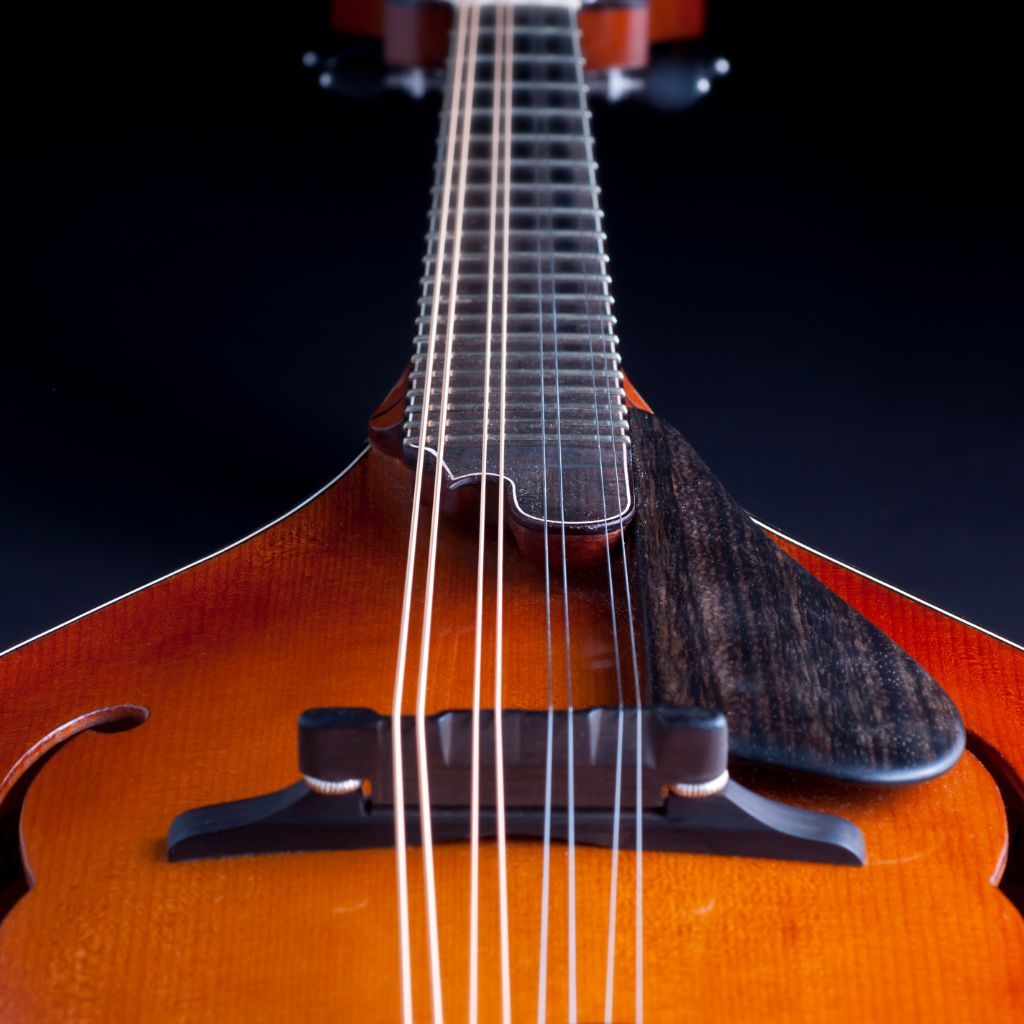
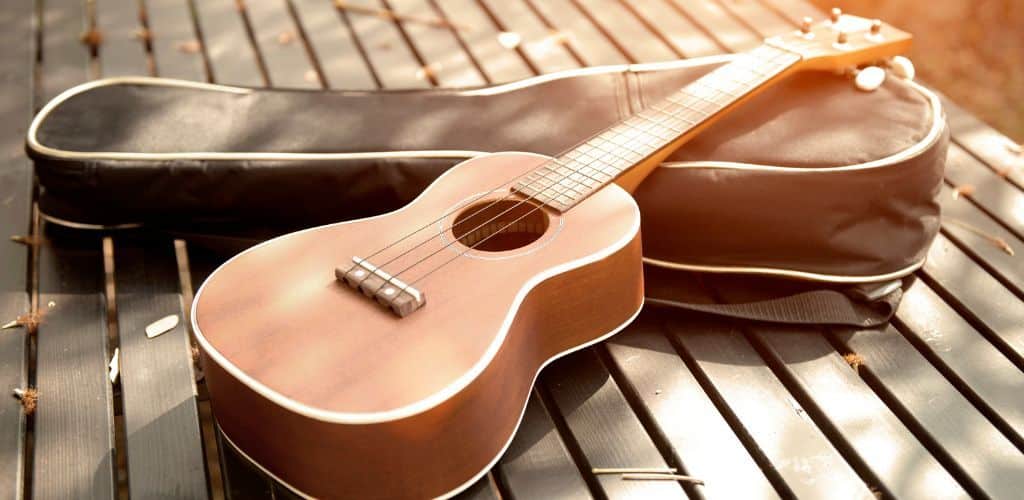
Design and Construction
In the world of string instruments, the ukulele and mandolin stand out for their distinct sounds and unique design and construction.
These instruments have been around for centuries, captivating audiences with their diverse shapes, sizes, and playing styles. As acoustic instruments, they produce sound naturally without electronic amplification.
Let’s explore their physical characteristics and see how they compare!
Body and Shape Variations
Ukulele Body
While both instruments are renowned for their compact bodies, their shape varies significantly.
Your ukulele typically comes in a figure-eight body shape, mimicking a small classical guitar.
It has four strings and offers a range of sizes, from the petite soprano ukulele, the concert ukulele, the tenor ukulele, and the larger baritone ukulele.
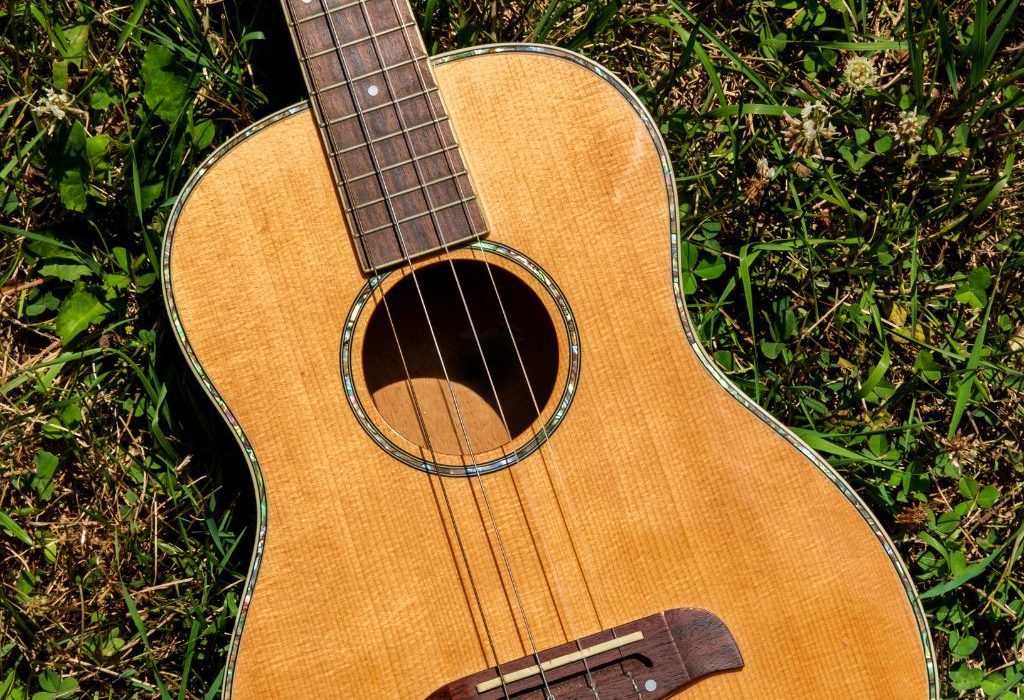
Since we are talking about this, the Cordoba 20CM Concert Ukulele offers a rich, full-bodied sound and exceptional playability, making it one of my major choices for a ukulele.
I consistently recommend it to my students for its reliable intonation and the superb craftsmanship that Cordoba is known for
Cordoba 20CM Concert Ukulele

PERFECT FOR: performers of all abilities
FEATURES: Crafted from solid mahogany, delivering such a big tone from a small instrument
OTHER INFO: Added warmth delivered from rosewood bridge and fingerboard
Cordoba 20CM Concert Ukulele
- Traditional appearance thanks to handmade design
- With a traditional concert shape that's perfect for little learners as well
- May not be ideal for those who are on a tight budget
When you click ‘Check Price’, you’ll see there are loads of great places to buy this item. Our personal favorite is Sweetwater for the US, and Thomann and Gear4Music for the UK & Europe.
They are the largest music retailers, with excellent customer service, competitive prices, really fast shipping, and the longest guarantees.
The professional musician who wrote this article combined many things,
from the product build, manufacturer’s reputation through to feedback
from other users, to create our famous TedScore™.
Mandolin Body
In contrast, the mandolin is commonly found in two design styles:
A-style: its teardrop shapes
F-style: a more ornate, scrolled body.
Mandolins have eight strings arranged in pairs, adding to their rich, echoed tones.
The design of the mandolin also significantly affects its sound projection, enhancing its overall acoustic performance.
Some models, like the bowl-back or Neapolitan, offer a unique, lute-like round back.
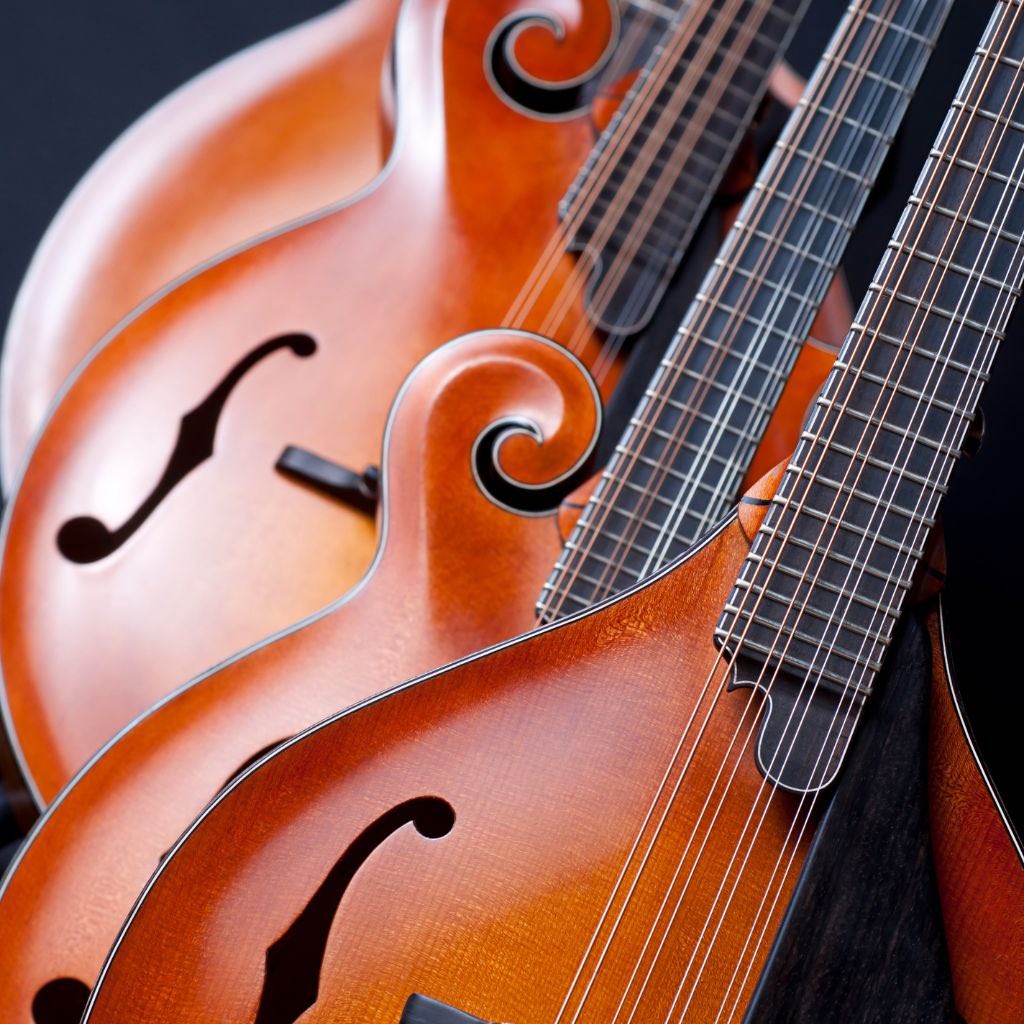
If you’re interested in buying a mandolin, I highly recommend the Ibanez M510E Electro Acoustic Mandolin in Brown Sunburst.
It delivers a crisp, vibrant tone and seamless amplification, which I find indispensable for studio recordings and live performances.
Its playability and consistent quality make it an instrument I confidently recommend to my students who are serious about honing their mandolin skills.
Ibanez M510E Electro Acoustic Mandolin, Brown Sunburst

FEATURES: Bright, crystal-clear tone exudes in abundance from a spruce top
OTHER INFO: Glide seamlessly across the New Zealand pine fretboard and mahogany neck
- Affordable price point for a quality acoustic-electric mandolin
- Built-in pickup system allows for easy amplification and performance
- Comfortable and easy to play
- Doesn't come with a case or gig bag
When you click ‘Check Price’, you’ll see there are loads of great places to buy this item. Our personal favorite is Sweetwater for the US, and Thomann and Gear4Music for the UK & Europe.
They are the largest music retailers, with excellent customer service, competitive prices, really fast shipping, and the longest guarantees.
The professional musician who wrote this article combined many things,
from the product build, manufacturer’s reputation through to feedback
from other users, to create our famous TedScore™.
Materials and Strings
Ukulele Material and Strings
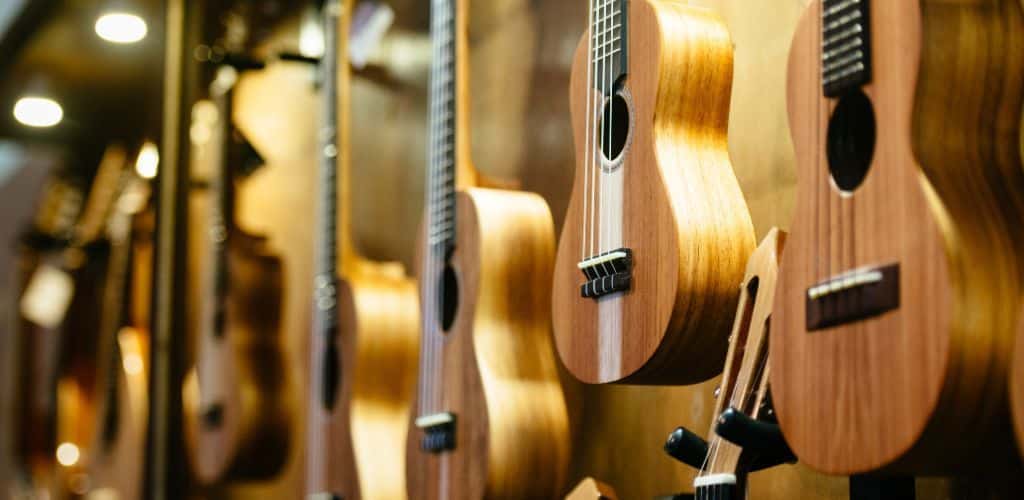
Ukuleles are crafted from various kinds of wood, such as lightweight mahogany for a warm tone or koa for that distinct Hawaiian sound.
Traditionally, ukuleles sport nylon strings, which are gentle on the fingers and produce a mellow sound.
Speaking of strings, I’ve found the D’Addario EJ88C Nyltech Natural Nylon Concert Ukulele Strings a superior choice for my students!
Their warm, rich tone, excellent intonation, and durability enhance playability and instill confidence in learners at all levels.
D'Addario EJ88C Nyltech Natural Nylon Concert Ukulele Strings
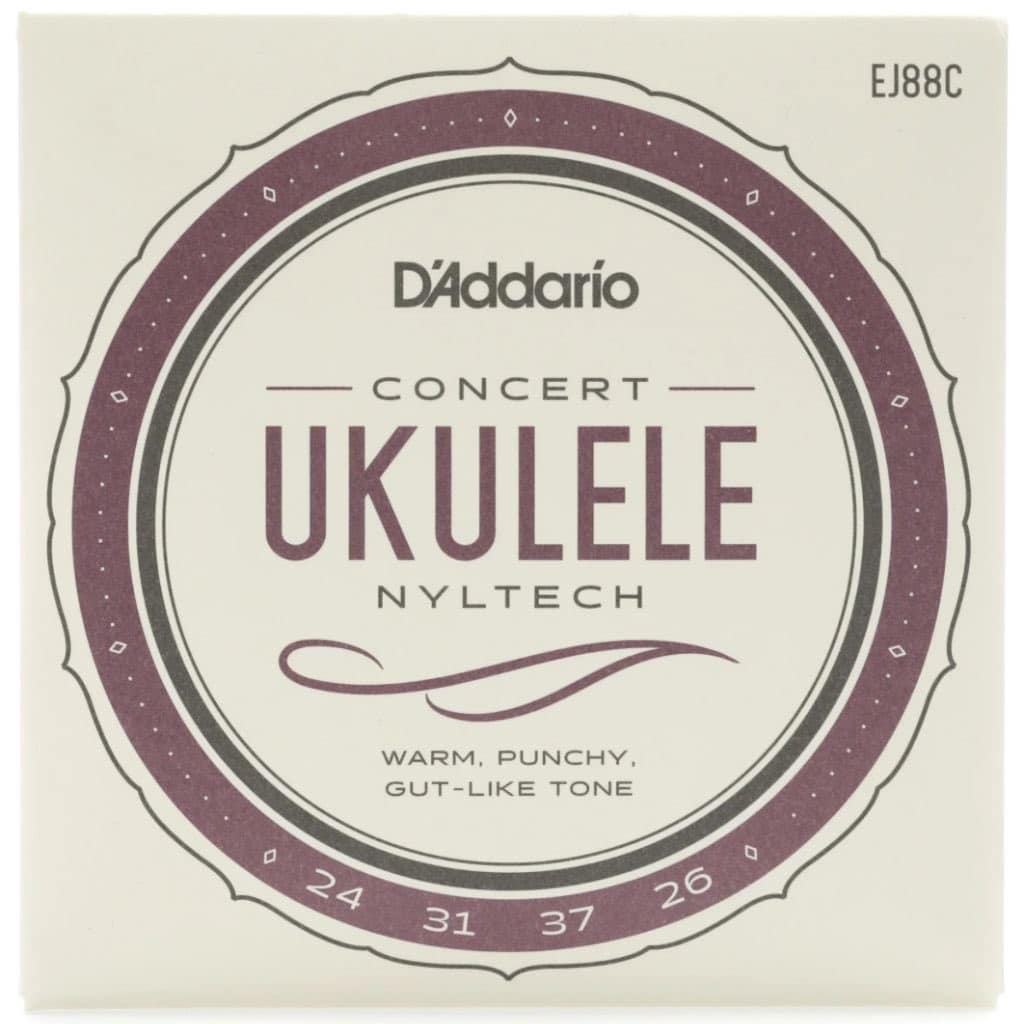
FEATURES: Mellow, warm, and punchy strings for your concert ukulele
OTHER INFO: Made from D'Addario's proprietary Nyltech synthetic polymer
- Combines smooth feel with exceptional tonal warmth
- Natural tension gauges: .024, .030, .036, .026
- No Cons!
When you click ‘Check Price’, you’ll see there are loads of great places to buy this item. Our personal favorite is Sweetwater for the US, and Thomann and Gear4Music for the UK & Europe.
They are the largest music retailers, with excellent customer service, competitive prices, really fast shipping, and the longest guarantees.
The professional musician who wrote this article combined many things,
from the product build, manufacturer’s reputation through to feedback
from other users, to create our famous TedScore™.
Mandolin Material and String
However, Mandolins are often built using wood, like spruce, for the top to achieve a crisp, resonant tone.
The eight metal strings contribute to the mandolin’s voice’s bright, punchy quality. Despite the string tension, well-crafted mandolins balance playability with robust construction.
For more information on Mandolin strings, you may want to read this next article (How Many Strings Does A Mandolin Have?).
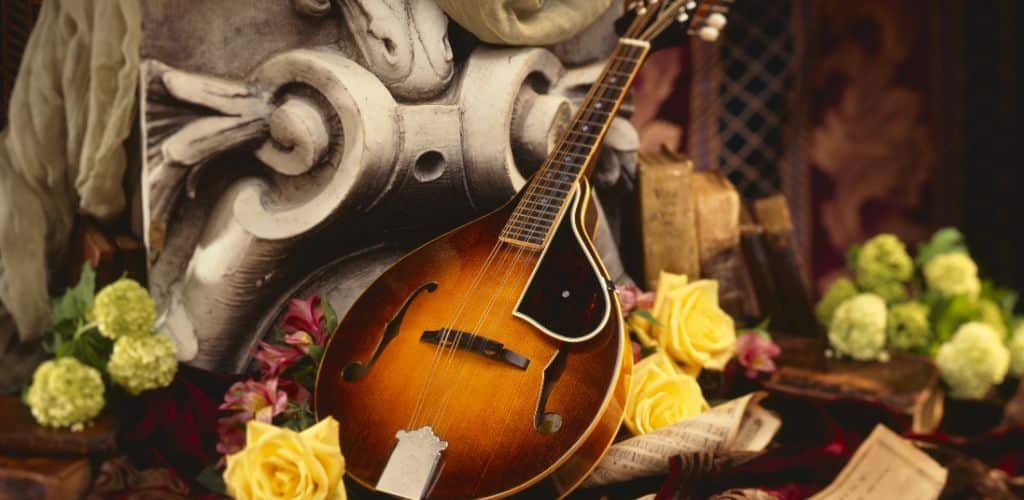
I also highly recommend the Ernie Ball Earthwood 2065 Mandolin Medium Set to my students for their consistent, vibrant tone, reliable tuning stability, and comfortable playability, making them an excellent choice for practice and performance.
Ernie Ball Earthwood 2065 Mandolin Medium Set

FEATURES: Made from phosphor bronze for a rich, warm tone
OTHER INFO: Precision wound for excellent intonation and durability
- Balanced and consistent tone across all strings
- Easy to bend and play with smooth action
- Long-lasting, thanks to the phosphor bronze coating
- Slightly higher price compared to other string sets
- May take some time to break in and settle into the desired tone
When you click ‘Check Price’, you’ll see there are loads of great places to buy this item. Our personal favorite is Sweetwater for the US, and Thomann and Gear4Music for the UK & Europe.
They are the largest music retailers, with excellent customer service, competitive prices, really fast shipping, and the longest guarantees.
The professional musician who wrote this article combined many things,
from the product build, manufacturer’s reputation through to feedback
from other users, to create our famous TedScore™.
Bridges, Frets, and Tuning Mechanisms in Fretted Instruments
The bridge plays a crucial role in tone production and intonation for both the ukulele and the mandolin, as they are fretted instruments.
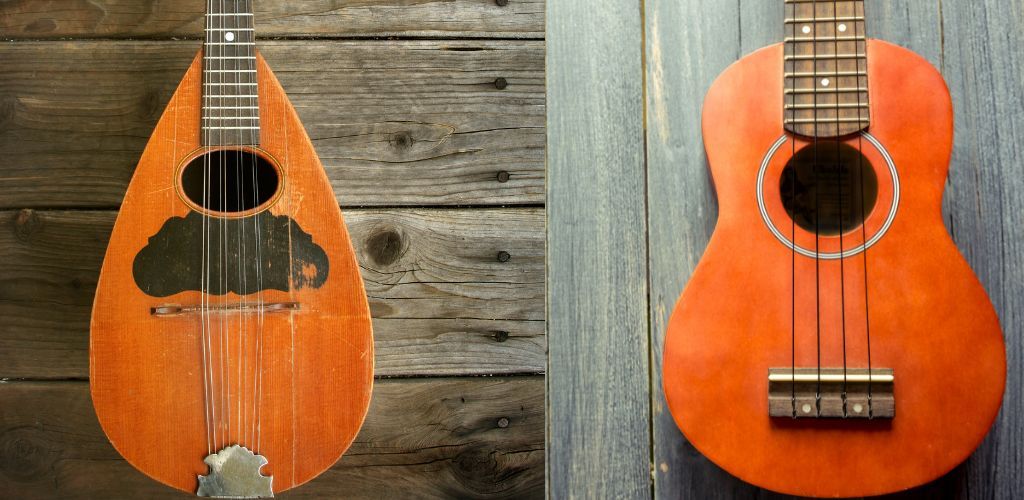
Ukulele
Ukuleles have a fixed bridge, which means the four strings are fastened directly to the body, ensuring stable tuning.
Smaller ukuleles may have a limited number of frets due to size constraints.
Mandolin
Mandolins employ a floating bridge, allowing for slight adjustments to intonation. Thanks to the mandolin’s shorter neck, you’ll notice the frets are closer together.
Tuning mechanisms vary from standard geared tuners on most ukuleles to friction pegs or geared tuners found on high-end mandolins, each offering ease of use and sustained pitch accuracy.
Playing
Techniques and Sounds
Each small guitar-like instrument opens up a vibrant soundscape and has unique playing techniques. These techniques allow for a wide range of musical expression, showcasing the versatility of both the ukulele and mandolin.
Here’s what you need to know to differentiate the nuances and bring out the best in these charming musical instruments.
Strumming vs. Picking
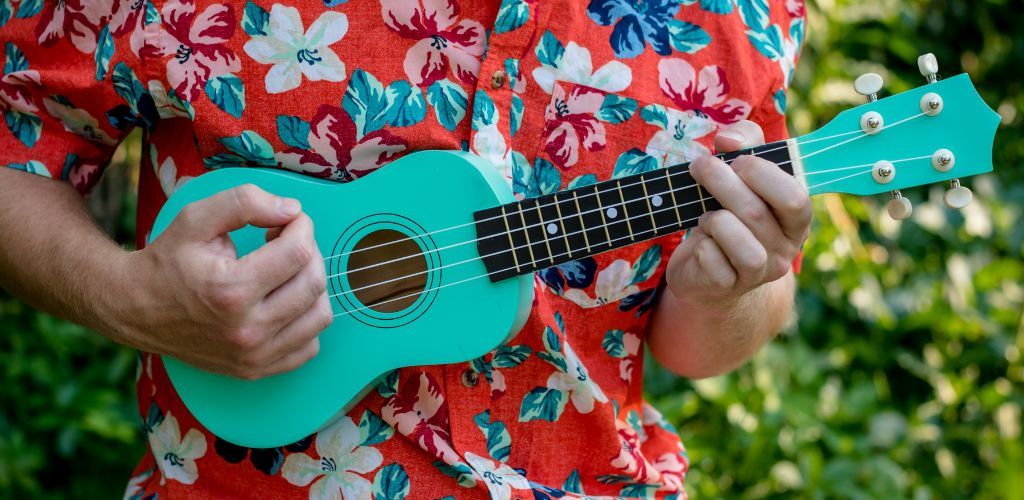
Ukuleles often invite a more relaxed, strumming pattern, typically played with fingers. This technique conjures a smooth, flowing sound, like gentle waves on a Hawaiian beach.
When you pluck the strings of a ukulele (like plucking the g chord or the scale on the g string), you get a soft, mellow tone, especially from the larger baritone and tenor ukuleles.
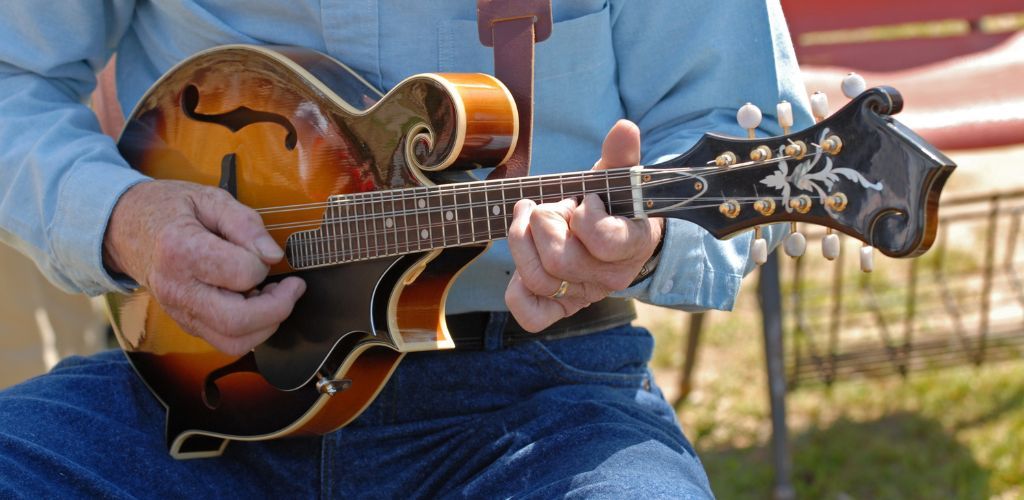
With their double-stringed courses, mandolins lend themselves to both strumming and picking, the latter bringing a precise and crisp melody to the forefront.
With a mandolin, your picking can be deep and resonant or fast and sharp, proving its versatility in many music styles.
Chords in Folk Music
Ukulele chords
Each sings in its own way with the standard ukulele tuning of G-C-E-A, creating a bright and cheerful sound. Ukulele chord shapes are straightforward and user-friendly, perfect for beginners.
Mandolin chords
The mandolin often plays in unison with G-D-A-E tuning, echoing the violin’s high-spirited voice.
Due to their finger-stretching shapes, the mandolin chords might require some muscle memory. But once you get the hang of it, you can strum or pluck intricate melodies and rich harmonies.
Sound and Tone
When it comes to sound and tone, the mandolin and ukulele each bring their unique voices to the musical table.

The mandolin is known for its bright, sharp sound, characterized by a lot of treble. Its eight metal strings, arranged in pairs, produce a punchy and aggressive tone that cuts through the mix, making it perfect for fast-paced, energetic music.
The mandolin’s sound is often described as crisp and vibrant, adding a lively sparkle to any ensemble.
In contrast, the ukulele offers a warmer, more mellow sound with a rich bass presence. Its four nylon strings produce a soft, gentle tone that is soothing to the ears.
The ukulele’s sound is often associated with relaxation and happiness, making it a favorite for laid-back, introspective music. Whether you’re playing a simple chord progression or a complex fingerstyle piece, the ukulele’s tone is always inviting and pleasant.
Music Styles and Genres
The mandolin and ukulele each shine in different music styles and genres, showcasing their versatility and unique sound qualities.
The mandolin is a staple in bluegrass, folk, country, and classical music. Its bright, sharp sound is well-suited for fast-paced, energetic tunes, making it a favorite among bluegrass and folk musicians.
The mandolin’s ability to produce intricate melodies and harmonies also makes it a valuable addition to classical compositions, where its crisp tone adds a distinct flavor.

On the other hand, the ukulele is commonly used in pop, folk, and traditional Hawaiian music. Its warm, mellow sound complements slower, more introspective songs, making it a popular choice for singer-songwriters and folk musicians.
The ukulele’s cheerful tone is also a hallmark of traditional Hawaiian music, where it brings a sense of joy and relaxation to the melodies.
In conclusion, whether you’re drawn to the lively strumming of the mandolin or the gentle plucking of the ukulele, each instrument offers a unique musical experience that can enrich your playing and listening journey.
Comparisons and Suitability for Beginners
Getting familiar with these two instruments is like meeting two members of the same musical family, each with unique quirks and charms.
While similar in some aspects, the mandolin and the ukulele offer different paths for beginners eager to start their musical journey. Each instrument brings its musical versatility, allowing players to explore a wide range of music styles.
Physical and Acoustic Differences
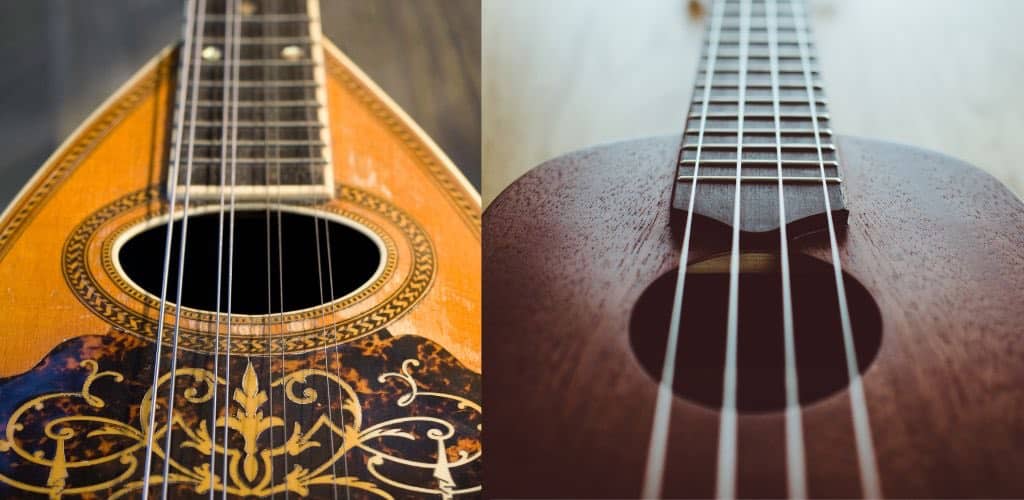
Ukuleles, typically associated with Hawaiian music, have a warm, soft sound that welcomes new musicians.
Smaller with usually four nylon strings, the ukulele is less intimidating for beginners and more comfortable for smaller hands.
Mandolins are part of the lute family and are often linked with bluegrass and American folk music. They have eight steel strings paired in four courses, giving them a brighter, more resonant tone.
Physical appearance also sets these instruments apart. Additionally, the sound quality of each instrument varies significantly, with the ukulele offering a mellow tone and the mandolin providing a sharper, more vibrant sound.
The mandolin’s teardrop or A-style shape is reminiscent of a tiny lute, while the ukulele boasts a figure-eight design akin to a small classical guitar.
Holding each instrument feels different due to these shape differences, impacting your comfort level during practice sessions.
Ease of Learning and Playing Styles
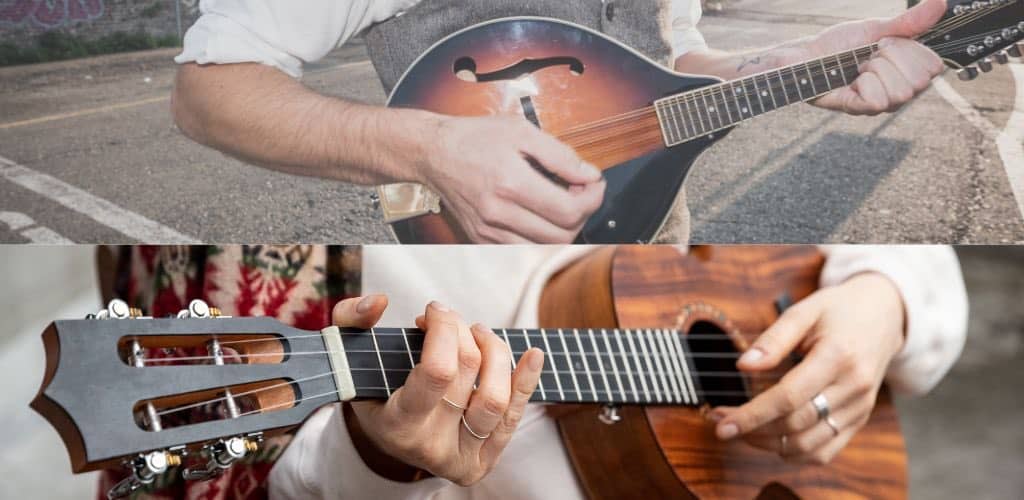
You might wonder, “Which is easier to learn, the ukulele or mandolin?” The learning curve for each instrument varies, with the ukulele generally being easier for beginners.
Honestly, it’s subjective, but the ukulele’s softer strings and gentler fretboard may be kinder on your fingertips.
Less tension in the strings means less hand fatigue, and you can play for longer periods, making you feel like a maestro in moments.
Yet, the mandolin could be your go-to if you’re drawn to the lively strumming and picking patterns in bluegrass or American folk music.
Mastery of the mandolin’s playing style is a rewarding challenge. Although it may take more initial effort, the distinctiveness of its sound is highly rewarding.
Are Ukulele and Mandolin Similar:
The Final Verdict!
So, there you have it!
These popular instruments are like two different individuals; they are totally different from one another but somehow manage to complement one another.

STRINGS: The ukulele typically has four nylon strings, while the mandolin features eight steel strings in four pairs.
This difference in strings means they resonate with certain sounds: warm and softer sounds for the ukulele and bright ones for the mandolin.
SHAPES: The ukulele’s small, guitar-like body contrasts with the mandolin’s curved, lute-inspired silhouette.
TUNINGS: The ukulele’s standard tuning is G-C-E-A, which makes playing chords easy. The mandolin, on the other hand, is generally tuned in perfect fifths, G-D-A-E, identical to a violin, which offers rich, layered harmony.
There’s a reason you’ll find both at a jam session. They each bring a playful vibe, with the ukulele’s laid-back charm complementing the mandolin’s lively jigs. Embarking on a musical journey with either instrument can be a rewarding experience.
It’s like they’re old friends, each with a story to tell!
In the end, you’ve got two stringed instruments that are as individual as snowflakes yet manage to complement each other perfectly.
They’re distinct enough to stand out in any tune they play!
So, pick one up, strum a chord, and feel the magic of the mandolin or ukulele under your fingers!
We’re almost done!
If you’re looking for the best beginner ukulele, read this article. It will help you choose the best ukulele for you!
FAQ's
The ukulele is generally considered easier to play than the mandolin due to its softer nylon strings, simpler chord structures, and fewer strings.
While playing the mandolin requires learning different techniques and tuning, some key skills from the ukulele, like finger dexterity and musical understanding, can provide a helpful foundation.
The baritone ukulele is closest in size and tuning to the standard ukulele. In contrast, the soprano, concert-size, and tenor ukuleles offer a similar playing experience with slight sound differences and scale length variations. This instrument comparison highlights the subtle distinctions between different types of ukuleles.
The violin is similar to the mandolin regarding string tuning and note layout, making skills on one somewhat easy to transfer to the other.



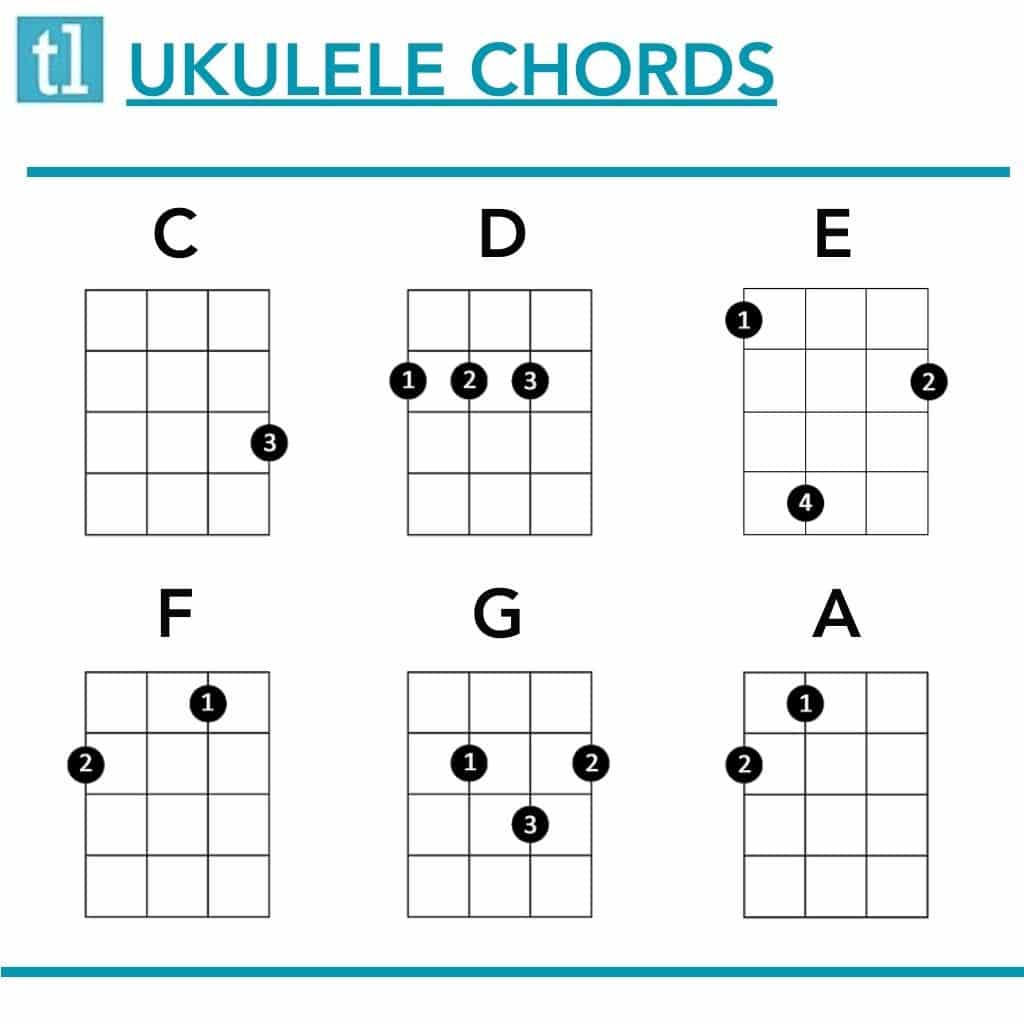
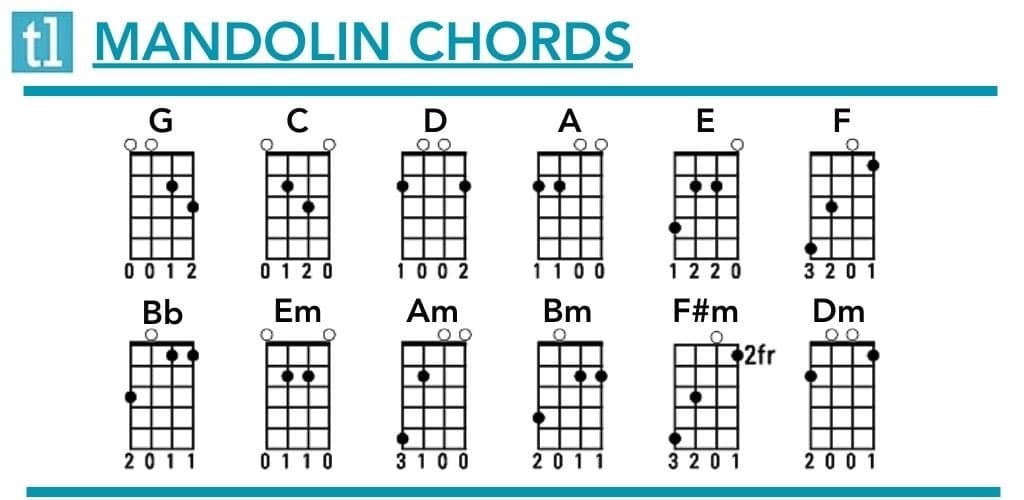
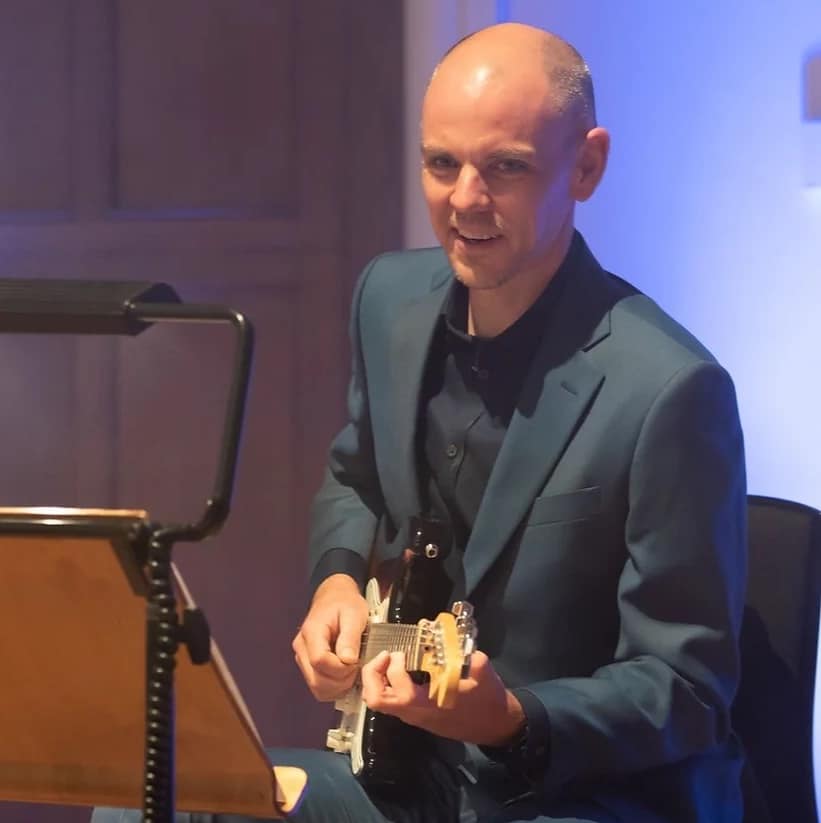







Fascinating read on the design nuances between the ukulele and mandolin. Having spent a fair amount of time tinkering with guitar builds post-retirement, it’s intriguing to see how variations in body shape and materials can significantly alter an instrument’s tonal quality. Lewis Turner did a superb job explaining these complex concepts in an accessible manner. I’ve always believed that the beauty of stringed instruments lies in their diversity and adaptability across different musical styles. Articles like this only deepen my appreciation for the craft.
Completely agree, Fletcher. It’s always a marvel how physical properties translate into the soul-stirring sounds of stringed instruments. The engineering behind it is just as beautiful as the music itself.
While the author, Lewis Turner, presents an insightful comparison between ukulele and mandolin, I believe the article could benefit from deeper exploration into the playing techniques specific to classical stringed instruments. The distinction between folk and classical genres seems slightly underrepresented.
yo, does it say anything about drums or is it just strings? kinda skimmed through looking for percussion stuff but didn’t see none.
Absolutely loved the detailed walkthrough on the construction and material differences between the ukulele and mandolin! As someone who teaches music and occasionally dabbled in guitar, it’s fascinating to learn about the nuanced design choices that impact an instrument’s sound. Kudos to Lewis Turner for such an informative piece. It’s articles like this that make me excited to introduce more stringed instruments into my teaching curriculum.
Thanks! There’s so much beauty in the details, right? Makes teaching and learning all the more exciting.
Hey Melinda, I totally agree! It’s so refreshing to see articles delve into the craftsmanship behind musical instruments. Makes me appreciate the strings section a bit more in my jazz arrangements.